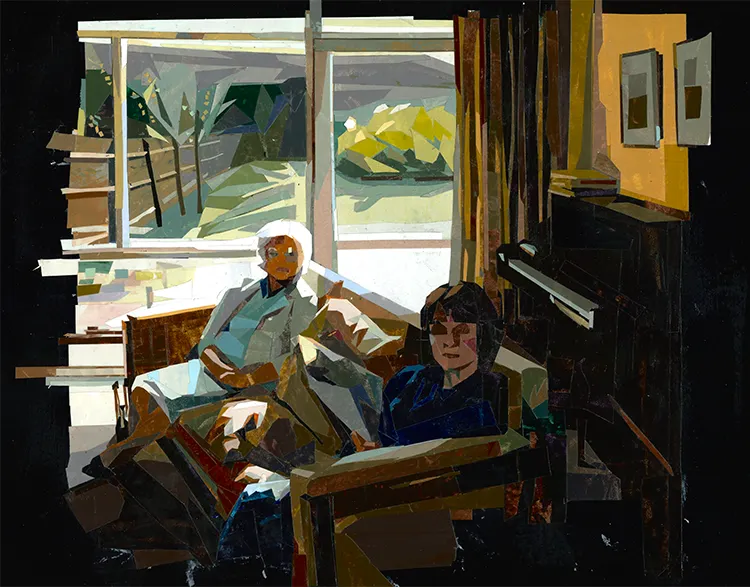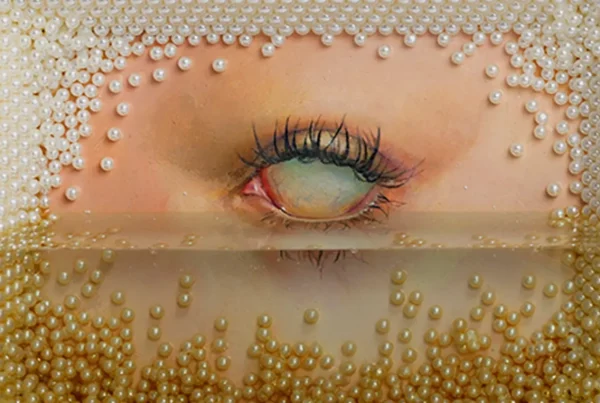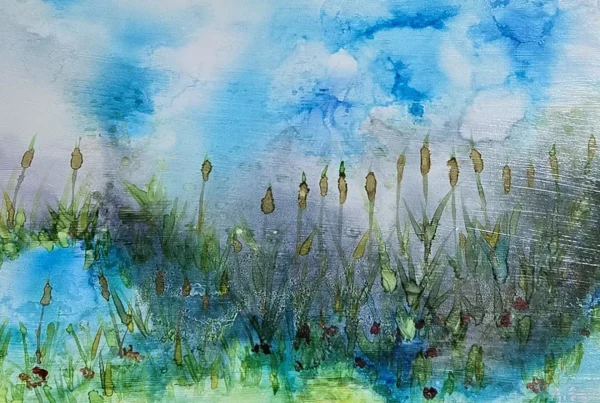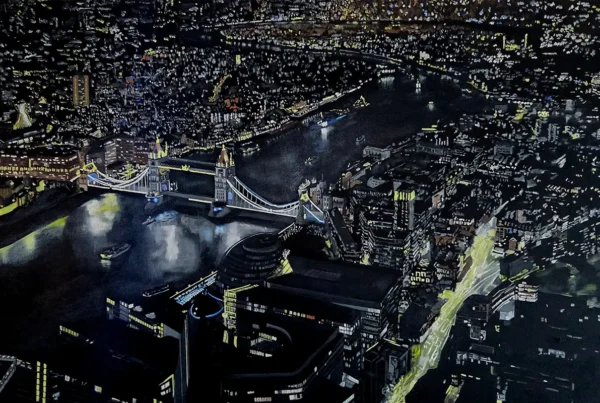“My collages are paintings essentially, created with a dry paint rather than a wet one.”
A Shift in Artistic Direction
Lizzie Parry, a London-based figurative artist, has forged a distinct path in contemporary collage, transforming a traditionally preparatory technique into a fully realized artistic practice. Originally trained as a painter, she explored various media before discovering a method that resonated deeply with her creative instincts. Her current work is rooted in prepared paper collage, a meticulous and layered approach that reinterprets the painter’s process through cut paper rather than brushstrokes.
Her pivotal artistic breakthrough came in 2019 during a residency at the Ballinglen Arts Foundation in Ireland, where she studied under American artist Catherine Kehoe. Kehoe’s use of collage as a tool for developing compositions in painting provided Parry with a new way of seeing. Unlike Kehoe, who treated collage as a preliminary exercise, Parry found herself captivated by the medium in its own right. This realization marked a decisive turning point—one that ultimately led her away from oil painting and toward an entirely collage-based practice.
The global lockdown in 2020 further cemented this shift. Confined to her home, Parry turned to old family photographs as inspiration, reinterpreting moments from the 1960s, ’70s, and ’80s in layered paper compositions. Working with these images became both a creative exercise and an emotional connection to her past, especially during a time of physical separation from loved ones. What began as a personal exploration soon evolved into commissioned portraiture, with clients drawn to her unique ability to reconstruct the familiar through the fragmented precision of collage. Over time, her subject matter expanded beyond portraiture to include landscape and still life, inspired in part by historical floral paintings and her admiration for 19th-century artist Mary Delany’s intricate botanical collages.
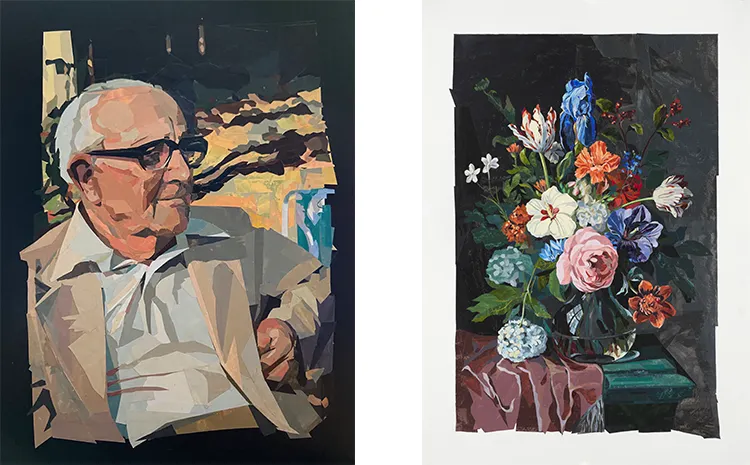
Lizzie Parry: A Painter’s Eye in Paper Collage
While collage often leans toward abstraction or surreal juxtapositions, Parry approaches it with the mindset of a painter. She constructs her images much like an oil painter might build layers of pigment, but instead of brushstrokes, she carefully cuts and arranges painted paper. Each piece is composed of color swatches she creates herself, painting thin sheets of paper with acrylics to develop a custom palette for each work. This allows for precise color matching, an essential aspect of her practice, as the depth and tonality of her collages are determined by these meticulously prepared hues.
Her process begins with a photograph, which serves as the foundation for composition and color reference. Once the palette is established, she works intuitively, cutting and layering paper to create form, depth, and light. The ability to scalpel off and replace sections without compromising the integrity of the work is one of the medium’s advantages, offering her a degree of flexibility akin to scraping back paint on a canvas. This iterative approach aligns with her interest in problem-solving—each collage is a puzzle in which she seeks to balance structure, color, and spatial relationships.
Although primarily known for portraiture, Parry has expanded her focus in recent years. Her still life works, particularly her studies of Flemish floral paintings, reflect a growing interest in composition and contrast. By recreating the luminous petals and dark backgrounds characteristic of 17th- and 18th-century Dutch and Flemish paintings, she explores how color and form guide the viewer’s eye. This analytical approach underscores her belief that art is, in many ways, a process of uncovering visual solutions—an extension of her love for logic puzzles, crosswords, and jigsaws.
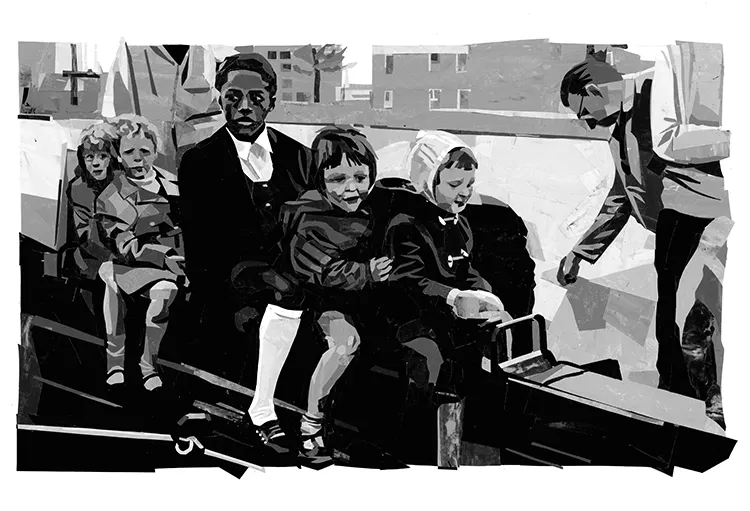
Creating Within a Home Studio
For Parry, maintaining a home-based studio is essential to her workflow. While she has experimented with external studio spaces, she found them to be more of an impediment than an aid. At home, she can work uninterrupted, with all her materials readily available and her creative momentum undisturbed by logistical constraints. Her workspace is centered around a large flat table, where she spreads out her painted papers, scalpel, and adhesives, allowing for a focused yet flexible working environment.
Music and podcasts are a near-constant companion as she works, providing both stimulation and a sense of rhythm to her process. The intimacy of a home studio also aligns with the personal nature of much of her subject matter—whether revisiting family photographs, reinterpreting historical art, or piecing together commissioned portraits. The close proximity to her daily life creates a seamless integration between art and routine, reinforcing the reflective and meticulous nature of her practice.
Despite the slow and deliberate pace of her work, she is now exploring ways to work more quickly and fluidly, particularly in landscape studies. The challenge lies in adapting her detailed approach to a subject that often demands immediacy. While she has yet to work en plein air, she remains intrigued by the possibility, viewing it as an opportunity to push the boundaries of her technique.
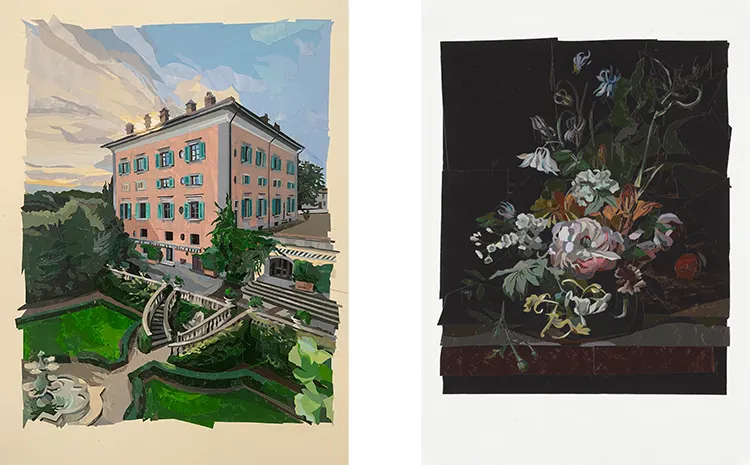
Lizzie Parry: The Pursuit of Aesthetic Solutions
Parry’s artistic process is rooted in the pursuit of aesthetic clarity. Whether working from a portrait, a floral arrangement, or a landscape, she seeks to uncover the fundamental dynamics that make an image visually compelling. She describes this process as a form of problem-solving—each composition presents a unique set of challenges, and the satisfaction comes from resolving them. This analytical mindset extends to her selection of source imagery, particularly in commissioned work, where she carefully evaluates multiple reference photos before deciding which will provide the most engaging visual puzzle.
Her artistic influences reflect this keen interest in structure and composition. She consistently returns to painters like Richard Diebenkorn, Edgar Degas, and Hans Holbein, as well as modern figurative artists such as Alice Neel, Joan Eardley, and Chantal Joffe. In the realm of collage, she finds inspiration in the works of Clare Woods, Elizabeth O’Reilly, and Michele BonDurant—artists who share her commitment to reimagining form through cut paper. These influences inform her own evolving practice, shaping both her technical approach and her conceptual explorations.
As she continues to refine her work, Parry is particularly drawn to the challenge of landscape. A single painting—Diebenkorn’s Seawall (1957)—has become a touchstone for her, offering a lesson in compositional balance and atmospheric depth. Having first encountered it in a gallery, she was struck by its impact from across the room, an experience that continues to shape her artistic aspirations. By dissecting and reconstructing elements of this and other landscapes in her collages, she seeks to grasp their underlying mechanics, ultimately aiming to infuse her own work with a similar sense of energy and harmony.
